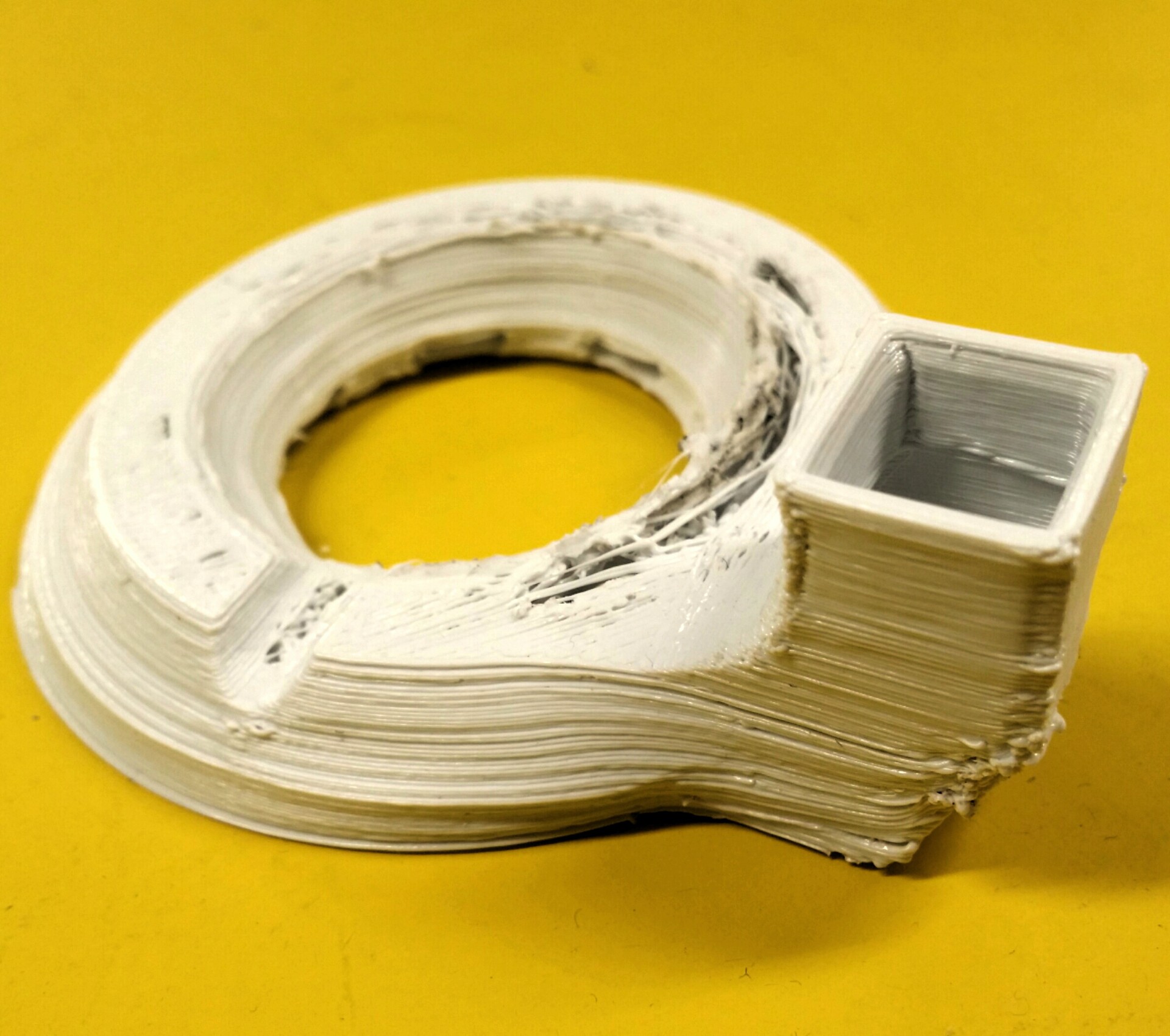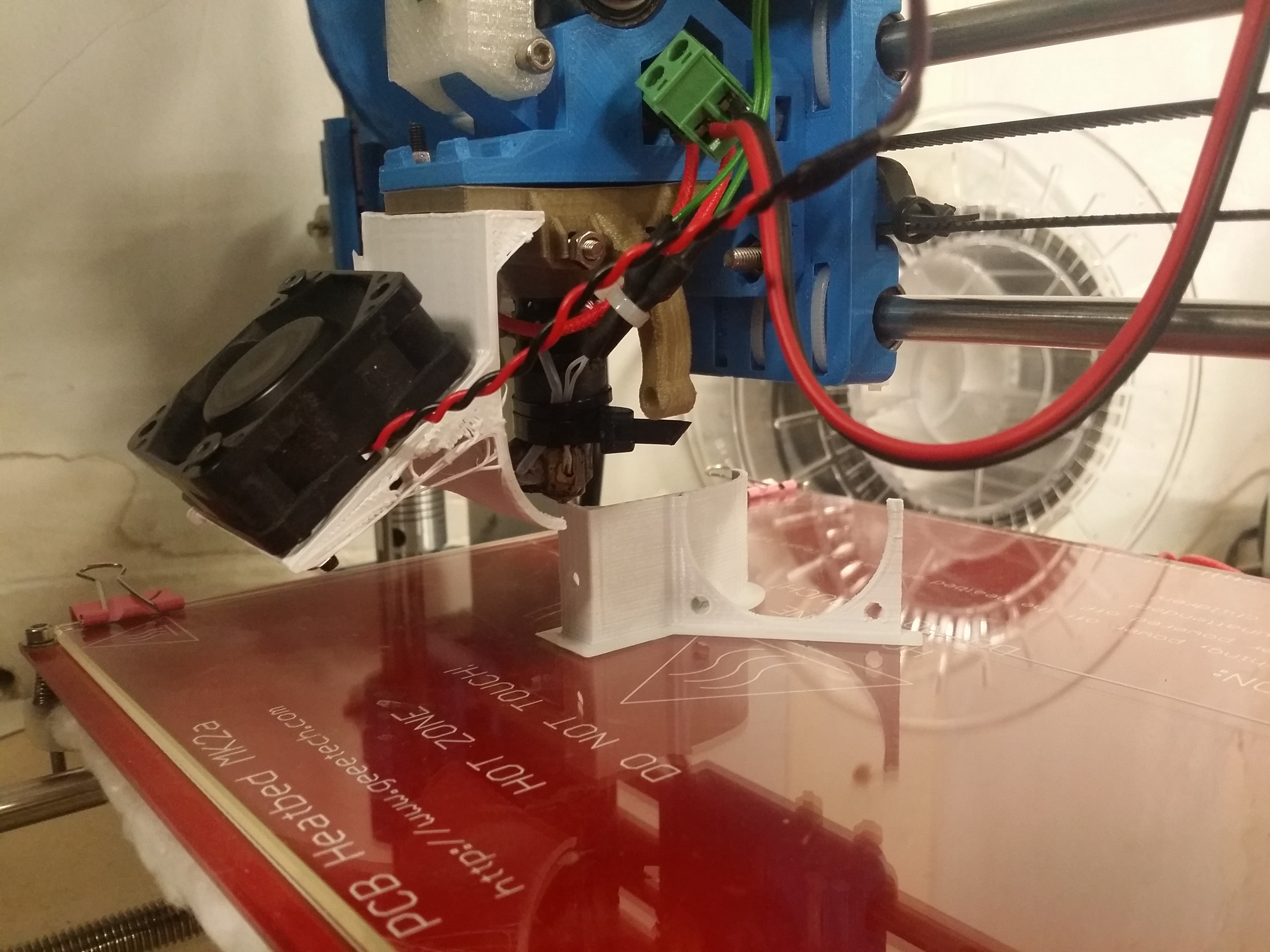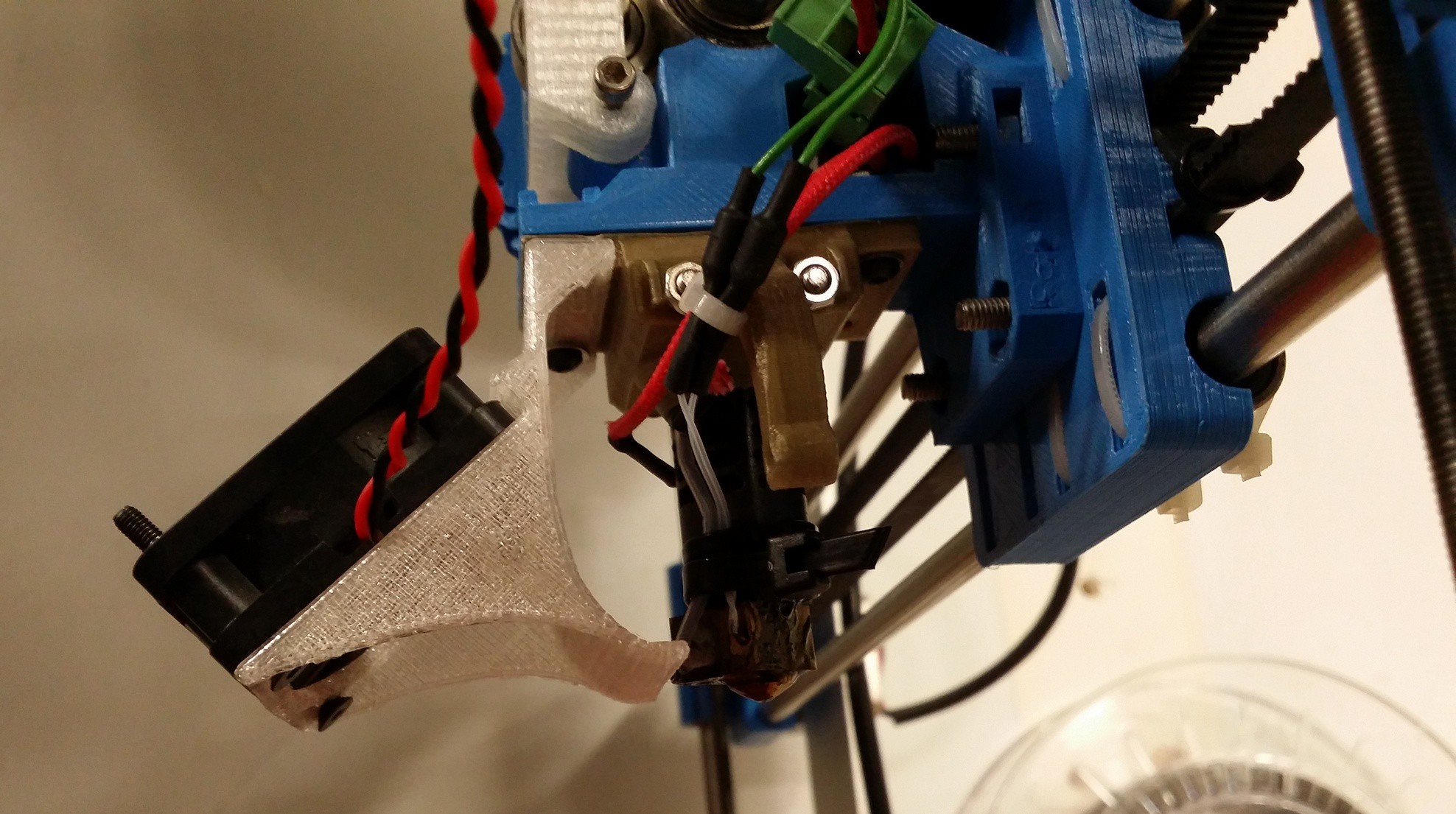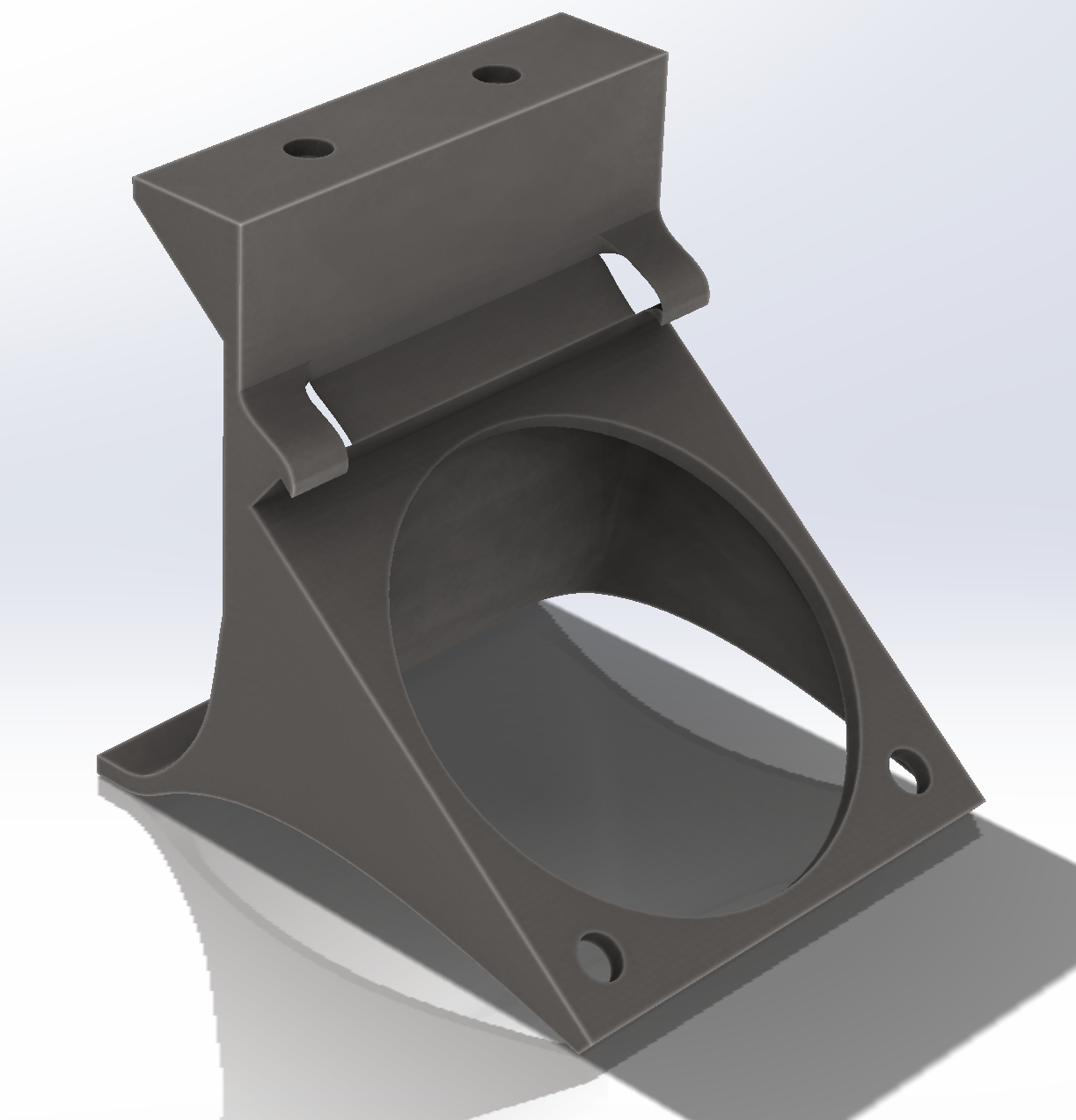We needed a functional 3D printer to produce our actuators and other mechanical pieces. The meccano prototypes were not very precise and seemed very "amateur".
We had a 3D printer that lacked a cooling fan for the extruder output. With no fan, the printing quality and possibilities are very limited since the extruder passes over and over on a plastic that had no opportunity to solidify. As a consequence, the printed object looks very mushy and the overhangs... just not possible.
Here is an example of an object printed without any cooling fan :

The ideal cooling system needs to be lightweight, produce a good airflow and focus it on the extruder output and not any higher since the hotend needs to be at a stable temperature to extrude a regulated flow of plastic.
Old system :

On the left is a sectional view of the fan duct. Another popular system is to condense the flow to obtain a higher output speed. But these two are not efficient solutions.
Most popular fans uses the same effect than plane wings to produce airflow. This is a solution that is great at producing high flow but low air pressure. Other fans can achieve both, these are blower/turbo fans, which are much more expansive, heavy, loud, and inconvenient to mount. Moreover they have a fairly lower size/flow ratio.
The fan duct solution above restrain the flow so higher pressure builds up in the chamber on the left which stops the flow and makes the air going intermittently backwards. Thus it is a very poor solution.
Regular vs. blower fan :

Our solution is to use the Coanda effect to be able to let the fan breathe freely and direct the flow efficiently. This effect describes how the flow has the tendency to stay attached to a convex surface.
Our system had 3 iterations, the latest is presented below and all files will be included in our GitHub:


Thanks for reading this long post ;)
 Raphaël Casimir
Raphaël Casimir
Discussions
Become a Hackaday.io Member
Create an account to leave a comment. Already have an account? Log In.